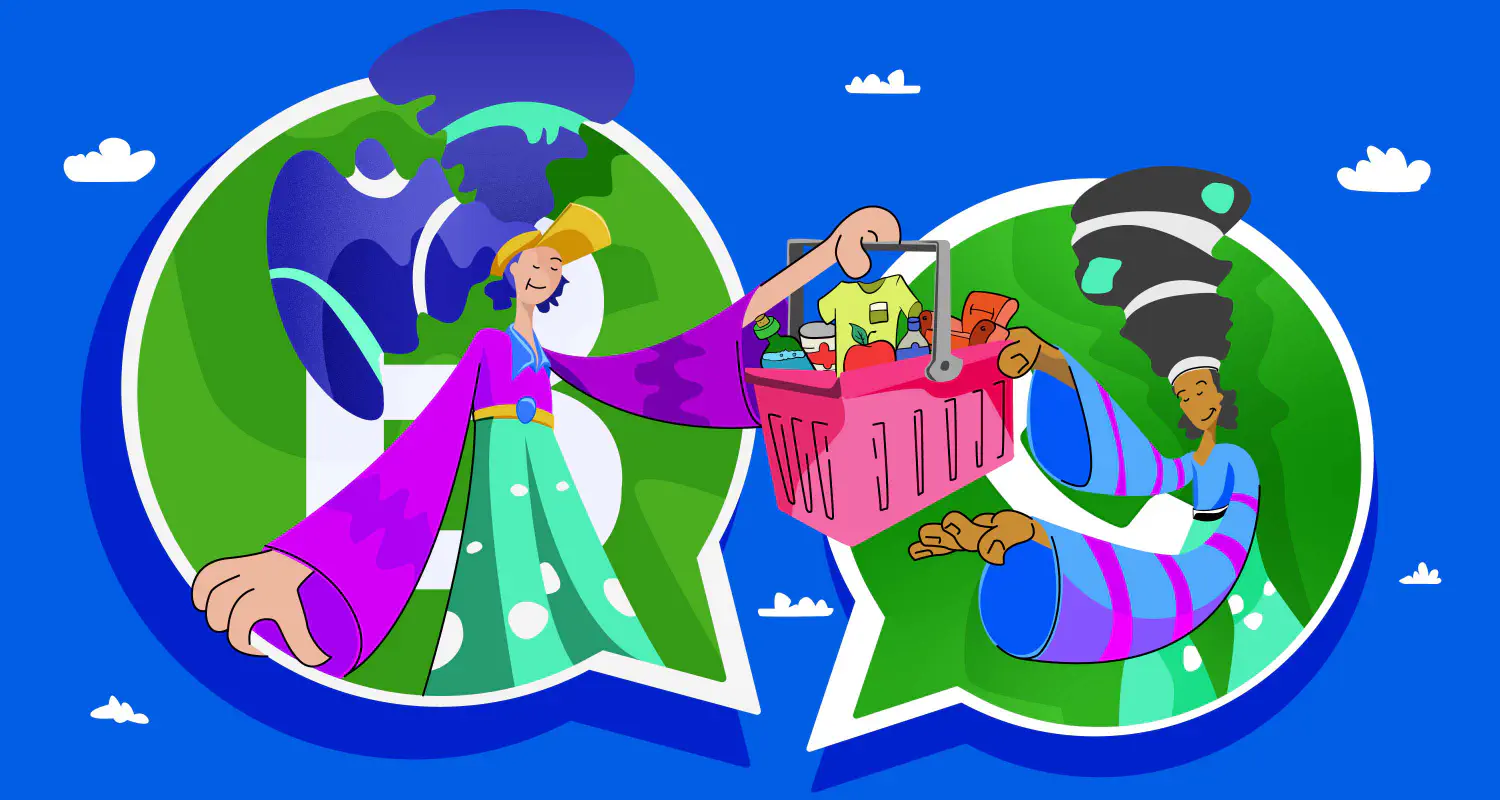What Is Sales Enablement? 5 Best Tools, Strategies & Benefits for Your Team

To enhance buyer engagement & boost revenue, sales agents need access to the right content, training & materials to peak buyers’ interest & excel in their roles. In this article, we’re going to cover the fundamentals of a sales enablement strategy, the benefits of using sales enablement platforms, and examples of different types of sales enablement tools. You can use it as an essential resource for crafting & implementing an effective sales enablement strategy for your business.
What Is Sales Enablement?
Sales enablement is a strategic, ongoing process that equips sales teams with the content, guidance & training needed to engage buyers effectively. It requires solid team collaboration between marketing & sales to boost revenue, shorten the sales cycle & improve conversion rates and forecast accuracy.
More often than not, sales enablement can be a very manual, time-consuming process that slows down performance. However, with the right sales tools, people, processes & technology, companies can create a more dynamic & proactive sales team, leading to improved sales performance & a more satisfied, successful sales organization.
Sales Enablement vs Sales Training
Sales training & sales enablement both empower salespeople with the skills and resources they need to close more deals. But that doesn’t mean they’re interchangeable. The specific ways these programs support your revenue organization—from onboarding and skill-building to quota-setting, compensation strategy, and tool implementation—are very different. Switch one for the other, and your team will notice gaps quickly.
So, what are the differences between them? Here’s a quick breakdown:
| Aspect | Sales Enablement | Sales Training |
|---|---|---|
| Definition | Providing sales agents and sales managers with information, content, and tools needed to perform at the highest possible level. | Teaching sales agents skills and strategies to help them generate more closed deals. |
| Key Focus | Buyer’s journey & buyer personas, enablement content (sales call templates, product guides), tools for optimizing the sales process. | Sales skills and strategies, ongoing training and development, methods (1-on-1 training, peer group meetings, certification programs). |
| Target Audience | Sales agents and sales managers | Sales agents |
| Content & Tools | Information on buyer’s journey, buyer personas, sales call templates, product guides, sales process optimization tools. | 1-on-1 training, peer group meetings, certification programs. |
| Purpose | To equip the sales team with the necessary resources to enhance performance. | To enhance the sales team’s ability to close more deals through skill and strategy development. |
| Training Components | No specific training components, focuses on providing resources and tools. | Includes various training methods such as onboarding, ongoing training, peer meetings, and certifications. |
Benefits of Sales Enablement
So, what does sales enablement do a business? Sales Enablement offers a range of benefits for both the sales team & the organization as a whole. Here are some of the key benefits:
- Increased Sales Productivity: Sales enablement streamlines workflows & automates tasks, allowing salespeople to focus on selling. They have easy access to centralized sales materials & content, reducing wasted time searching for information.
- Increased Sales Performance: With proper training and resources, salespeople become more knowledgeable and confident, leading to better win rates and quota attainment. Sales enablement takes a data-driven approach, allowing sales agents to tailor their pitches to specific customer needs.
- Improved Sales & Marketing Alignment: Sales & marketing teams work together more cohesively when they share common goals and resources. Sales enablement ensures marketing materials are aligned with the sales message, creating a consistent customer experience.
- Boosted Revenue & Business Growth: Sales enablement directly contributes to increased revenue and business growth by empowering salespeople and giving them all the content, training, and sales tools necessary to excel at their work.
What Teams Own Sales Enablement?
Sales enablement isn’t typically owned by a single department. It’s a collaborative effort, but the two main teams involved are: Sales & Marketing.
Sales: Sales reps provide valuable input into the sales enablement strategy. They communicate their needs for content, tools & training to the marketing team. This way, they can create and share those new materials with salespeople, allowing them to reach customers and sell more effectively. Additionally, sales agents play a crucial role in adopting and utilizing the resources provided.
Marketing: Marketing teams often takes the lead in creating a variety of resources that the sales team needs in order to effectively sell. These resources and materials often include videos, blogs as well as conversation and product guides. These resources ensure that messaging aligns with the sales approach and that sales agents have the resources they need to convert leads.
In some companies, a dedicated sales enablement team might be responsible for overseeing the entire program. This team would work closely with both marketing and sales to ensure everyone is aligned and that the program is effective. But in most cases, both sales and marketing share ownership of sales enablement.
How to Build an Effective Enablement Strategy
Now that we’ve covered why sales enablement is important, let’s get into the key steps you need to follow to create an effective sales enablement strategy for your business.
Define Your Target Audience
Who are your ideal customers? What are their pain points & challenges?
The 1st step in creating a successful sales enablement strategy is to define your target audience. This involves understanding the needs, pain points & motivations of your prospects and customers, as well as their buying behaviors and preferences.
Once you’ve defined your target audience, you can use this information to develop a customized sales enablement program that speaks directly to their needs and wants. This might include creating personalized content, providing targeted training, and leveraging technology to deliver a more personalized experience.
Identify Your Sales Goals
What is your target revenue? How many deals do you need to close to reach this target?
The next step in creating a successful sales enablement strategy is identifying your sales goals. This involves setting clear objectives for your sales team, such as revenue targets, win rates, and customer acquisition goals.
The goal of this step is to develop a data-driven sales enablement strategy that aligns with your overall business goals and objectives.
Create a Content Strategy
After defining your target audience and sales goals, you can begin creating a content strategy. This includes identifying the types of content that will be most effective in engaging with your target audience and creating a plan for producing and distributing that content.
It involves creating and organizing content that will help your sales team close more deals. Your content strategy should include materials like sales scripts, case studies, product demos, and customer testimonials.
Choose Your Tech Stack
To simplify your sales enablement efforts, you should build your tech stack. Your tech stack may consist of tools like customer relationship management (CRM) software, sales automation platforms, and a shared team inbox. These sales platforms can help you track customer interactions, automate repetitive tasks, and make it easier for your sales team to access and share content.
Train Your Sales Team
The success of a sales enablement strategy relies heavily on the success of your sales team. That’s why investing in ongoing sales training is important for new hires and existing team members. This can include training on product knowledge, sales techniques & sales enablement software.
Training your sales team is an essential part of any sales enablement plan. Your team must understand your products and services, target audience, and sales process. They also need to know how to use the sales enablement tools & content you’ve developed. Regular training and coaching can help your team stay updated with industry trends, best practices, and new products.
Monitor & Measure Team Performance
It’s important to monitor and measure the performance of your sales enablement strategy. You can do this by tracking key performance indicators (KPIs) like sales conversion rates and customer retention and collecting feedback from your sales team and customers. Use data & analytics to identify areas for improvement & refine your approach as needed.
Now let’s explore our top tools for each stage in the sales enablement process.
Top Sales Enablement Tools in 2024
There are 5 key aspects of the sales enablement process. We’ve handpicked tools that will help you tackle each part of your enablement strategy most effectively:
1. Rasayel - Sales Strategy & Planning
Strategy and planning tools are designed to help enablement teams define their strategies, plan initiatives, and optimize their processes based on real revenue and efficiency insights.
Sales strategy and planning tools are crucial components of a successful sales enablement strategy. They equip your team with the resources they need to develop a winning sales approach and execute it effectively.
A good example of such tools is Rasayel. It’s a shared team inbox that allows businesses to leverage the WhatsApp Business Platform. It’s the only shared team inbox built specifically to help B2B companies run their sales process over WhatsApp.
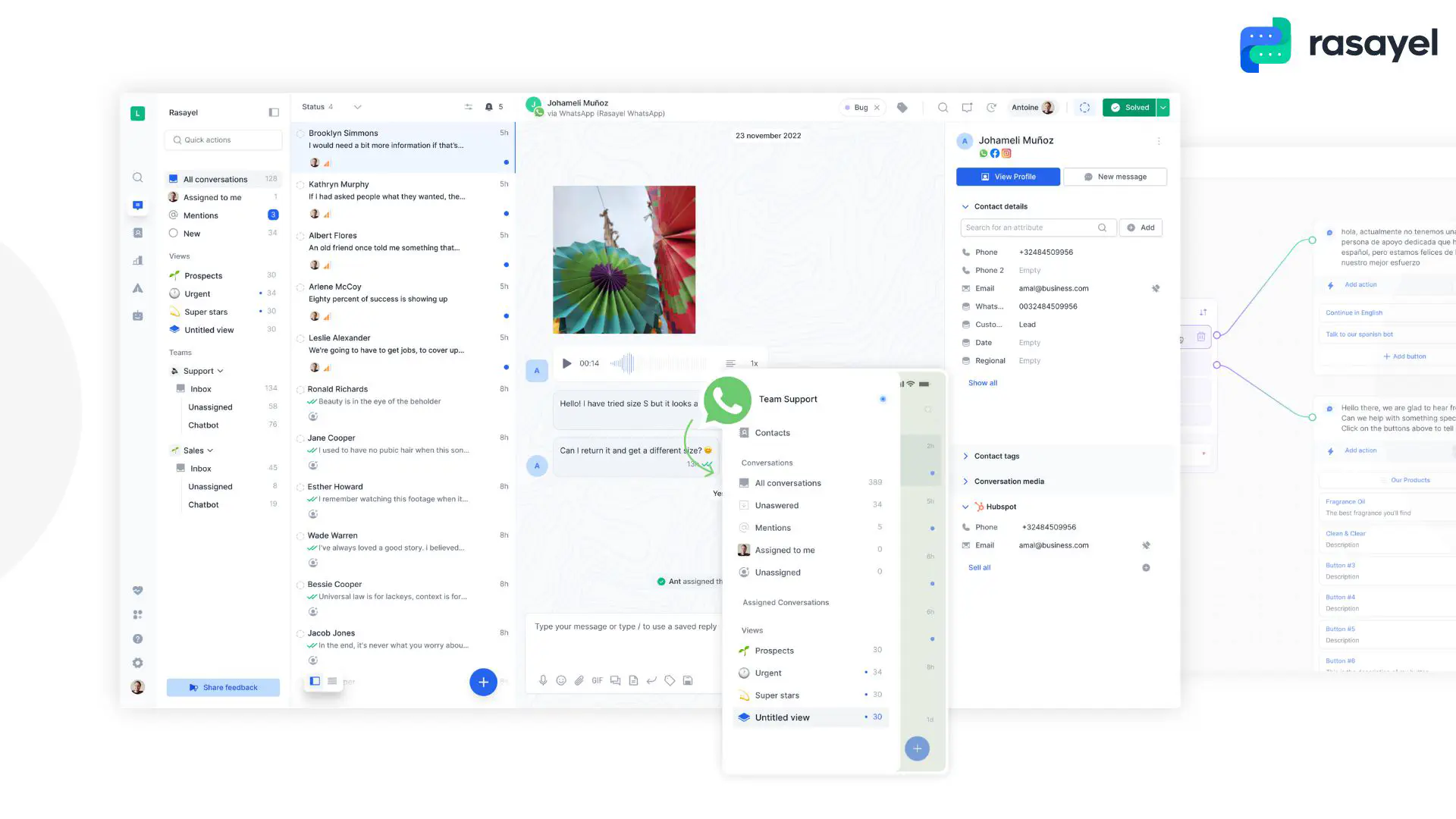
This makes Rasayel the optimal solution for B2B sales since all other shared team inboxes for WhatsApp do not offer features that are specifically optimized for sales.
Best Features:
- Shared Team Inbox: A collaborative shared inbox where sales teams can manage all WhatsApp communications, ensuring that no customer message is missed and that team members can easily collaborate & share information.
- No-Code Chatbot Builder: Automated no-code chatbots that can handle routine queries, lead qualification & appointment scheduling. This feature helps sales teams save time and focus on more complex interactions.
- CRM Integration: Seamless integration with popular CRMs like HubSpot, Pipedrive and alot more. This ensures that all WhatsApp interactions are automatically logged in the CRM, providing a comprehensive view of customer interactions and helping simplify the sales process.
- Detailed Reporting and Analytics: Sales managers can generate detailed reports on team performance and individual agent activities. These reports help in tracking performance, identifying areas for improvement, and making data-driven decisions
2. ShowPad - Sales Content Management
A sales content management system, or sales CMS, helps enablement, marketing, and other teams organize high-value content assets so they’re easy to find.
Sales agents use these assets to answer customer questions, show how your product or service meets their needs, and overcome objections. The right content helps the buyer see the benefits of your solution and a sales CMS puts the content where sales agents can find it.
An example of a Sales Content Management (SCM) is ShowPad.
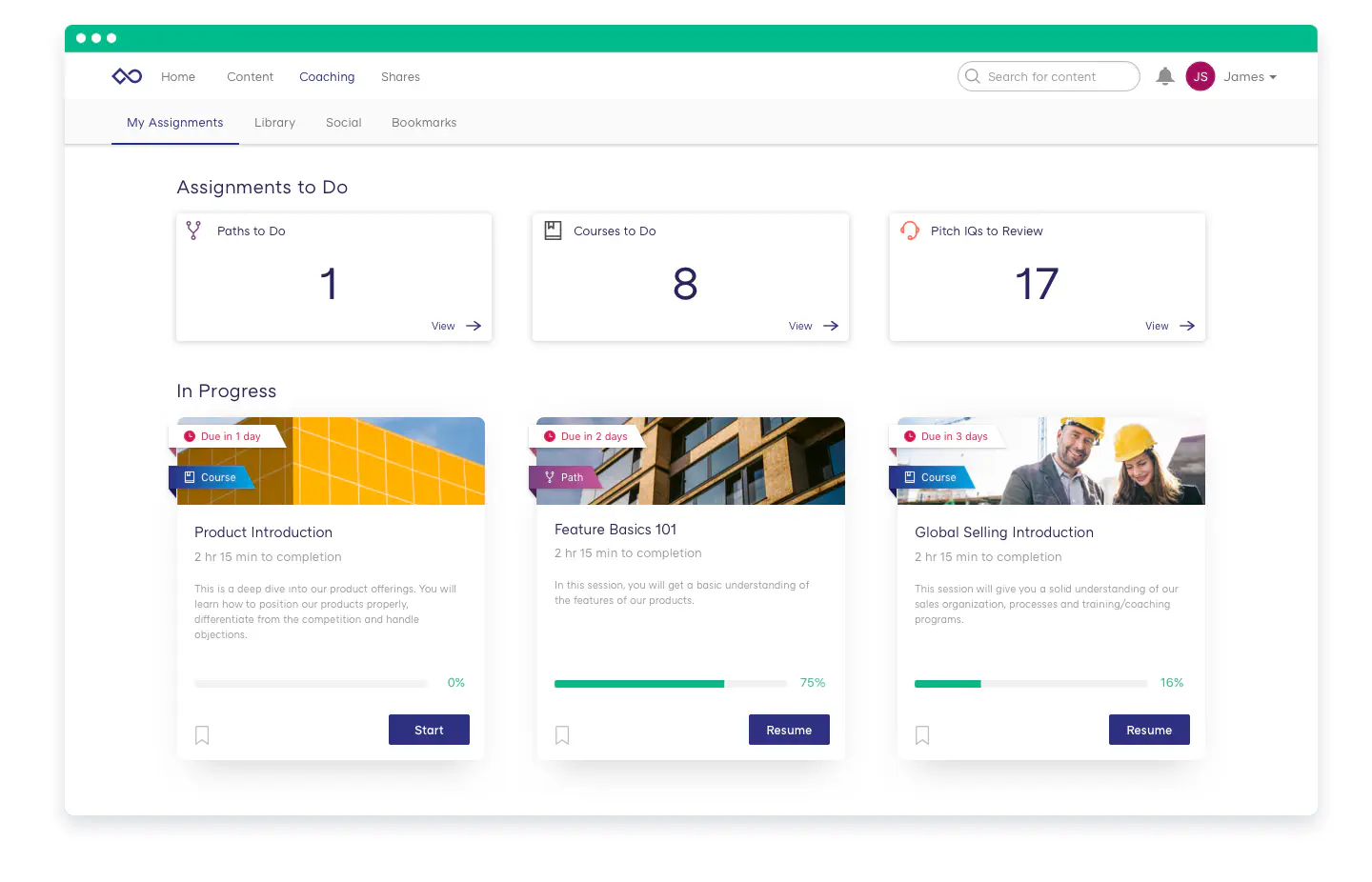
ShowPad unifies sales content management and enablement coaching on a single platform. It also combines interactive sales training experiences with effective sales coaching to develop top-gun sellers.
Best Features:
- AI-powered for sales and marketing alignment.
- Speeds up deal closure.
- Centralized Sales Content Management engine.
- Real-time feedback and coaching for sellers.
- Strategic alignment between sales and marketing teams.
3. Seismic - Sales Training & Coaching
This one is a straightforward and easy-to-understand type of tool. Customer-facing teams need learning, coaching, and skill development. This is why sales training & coaching tools exist.
Sales is a field that is always changing, and organizations need to keep up with these changes. The best way any organization can keep up with these changes and pivot quickly to adapt is by using sales training and coaching.
An example of a sales training & coaching tool is Seismic. Seismic equips your sales agents with the knowledge and information they need to engage buyers and close the sale. Through sales training and coaching offered on their platform, sales agents can train smarter, not harder, to learn exactly what skills they need to improve to be more effective.
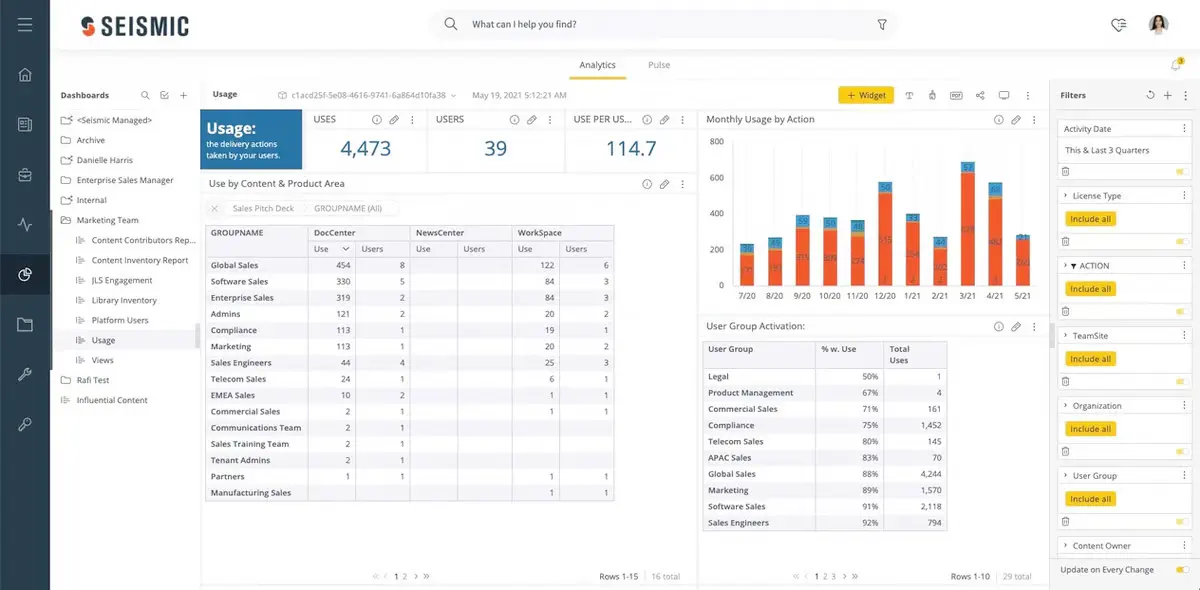
Best Features:
- Tagging and the ability to push or publish to specific content teams.
- Ability to make certain parts private with permission.
- Comprehensive analytics with insights into content usage and effectiveness.
4. Highspot - Buyer Engagement
Buyer engagement tools help sellers develop and foster relationships with prospects and customers so deals move faster. A good example of a buyer engagement tool is non-other Highspot.
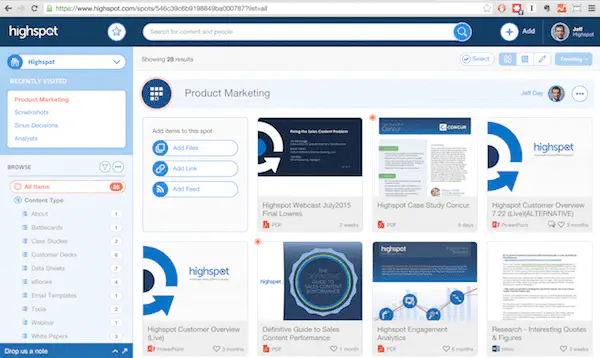
Highspot provides a robust sales enablement solution for sales teams by combining content management, playbook support, training modules, and buyer engagement features in one modern interface.
Best Features:
- Highspot’s search function is as easy as an internet browser, so it makes document retrieval effortless.
- The ability to track “pitched” content for analytics provides valuable insights into engagement.
- Features like call recording, coaching feedback, and auto-call assessments.
- Account managers and technical support offer excellent assistance.
5. Salesforce Sales Cloud Einstein - Sales Insights & Analytics
Insight and analytics tools ensure sales teams have the information needed so they know what deals are advancing. This helps the sales content creation process improve and be even more effective.
Sales insights guide teams to an informed decision and help the sales leaders forecast roughly how many deals are going to be closed this month or this quarter.
One of the best examples of this type of tool is Salesforce Sales Cloud Einstein.
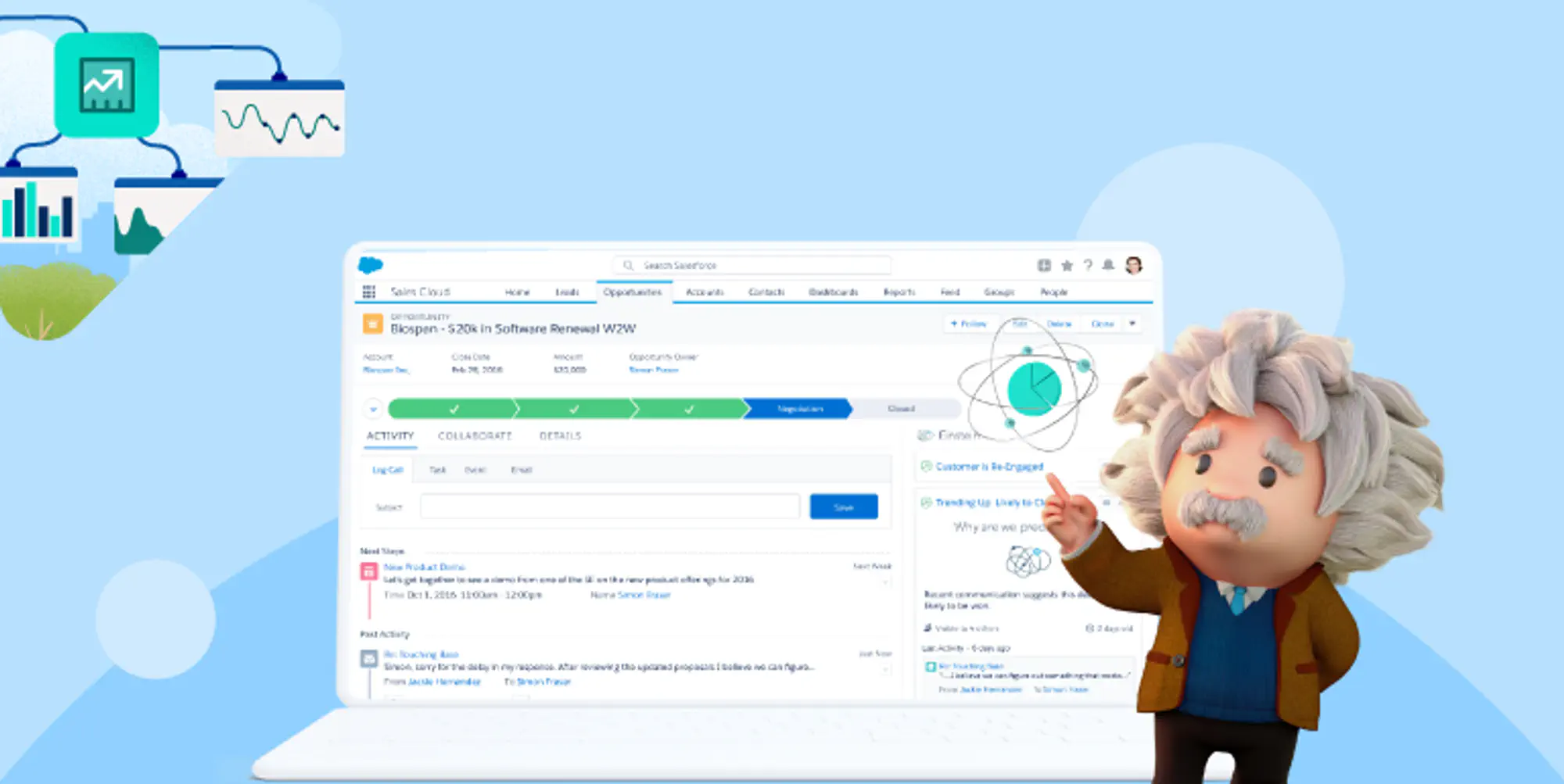
Salesforce Sales Cloud Einstein is a powerful AI-driven sales intelligence tool designed for enterprise-level businesses. It goes beyond basic sales analytics by leveraging artificial intelligence (AI) to provide a more predictive and prescriptive approach to sales. Here’s a deeper dive into its strengths as a sales insights and analytics tool.
Best Features:
- Predictive Analytics: Einstein uses historical sales data and machine learning to predict future outcomes like deal closure probability, lead quality, and churn risk. This enables sales agents to prioritize their efforts and focus on the most promising opportunities.
- Opportunity Insights: Einstein surfaces relevant information and insights about each opportunity, such as similar deals that were won or lost and key milestones to watch for. This equips sales agents with valuable context to tailor their approach and improve win rates.
- Automated Insights & Recommendations: Einstein proactively delivers personalized recommendations to sales agents based on their activity and customer data. This can suggest the next best steps for individual deals, highlight key contacts to engage with, and recommend content to share with prospects.
- Einstein Discovery: Uncover hidden patterns and trends in your sales data using Einstein Discovery, a data discovery tool. This can help you identify new sales opportunities and optimize your sales strategy for better results.
Conclusion
To sum up, the benefits of sales enablement cannot be overstated and investing in the right tool for your team is a necessity if you want to achieve consistent sales growth. Aside from aligning sales and marketing teams, a solid enablement strategy also equips salespeople with the necessary tools, information, and content to sell effectively. It boosts the performance of all sales reps, benefits customer-facing teams, and leads to more personalized sales approaches. In turn, this leads to faster deal closures and improved company reputation through helpful customer interactions.
Frequently Asked Questions
- Increased sales productivity: Reps spend less time searching for information and more time selling.
- Improved win rates: Reps have the resources and training to deliver compelling sales pitches and close more deals.
- Shorter sales cycles: Streamlined processes and readily available content help move prospects through the sales funnel faster.
- Enhanced buyer engagement: Sales reps can personalize their approach and address buyer needs more effectively.
- Improved sales forecasting: Data-driven insights from sales enablement tools lead to more accurate sales forecasts.
- Salesforce Sales Cloud
- HubSpot Sales Hub
- Rasayel
- Zoho CRM
- Gong
- Mixpanel
- Salesloft
- Contentstack
- Outreach
Learn more
If you'd like to learn more about how WhatsApp can help you grow your business, please reach out to us on WhatsApp at +13024070488 (Click to chat now).
We also offer a free consultation session where we review your use case, answer any questions about WhatsApp, and help you build a strategy to make the best out of the platform. Book a call with us here. We'd love to speak with you:
Book a call: Europe, the Middle East, and Africa
Book a call: LATAM
Curious about Rasayel? Schedule a demo today.

Omar Nabil, a former programmer, discovered his passion for writing while working on websites. Combining analytical thinking with creativity, he crafts brand stories that emotionally resonate and inspire action.



